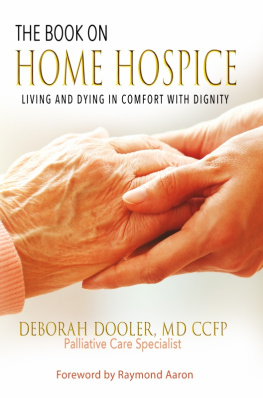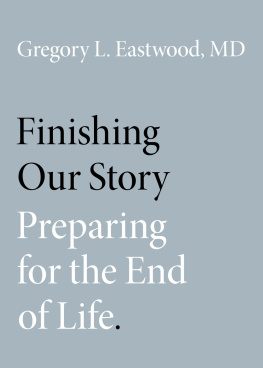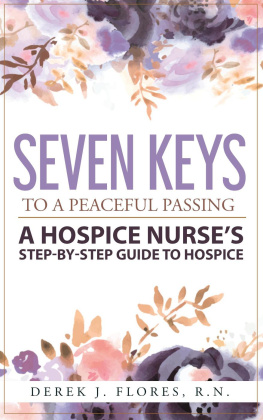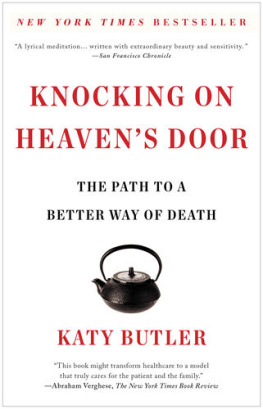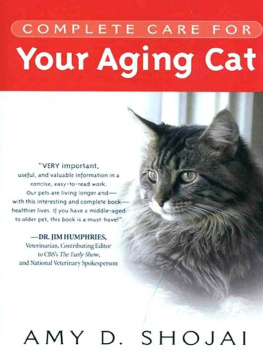Copyright 2018 by Samuel P. Harrington, MD
Cover design by Kelly Blair.
Cover copyright 2018 by Hachette Book Group, Inc.
Hachette Book Group supports the right to free expression and the value of copyright. The purpose of copyright is to encourage writers and artists to produce the creative works that enrich our culture.
The scanning, uploading, and distribution of this book without permission is a theft of the authors intellectual property. If you would like permission to use material from the book (other than for review purposes), please contact permissions@hbgusa.com. Thank you for your support of the authors rights.
Grand Central Life & Style
Hachette Book Group
1290 Avenue of the Americas, New York, NY 10104
grandcentrallifeandstyle.com
twitter.com/grandcentralpub
First edition: February 2018
Grand Central Life & Style is an imprint of Grand Central Publishing. The Grand Central Life & Style name and logo are trademarks of Hachette Book Group, Inc.
The publisher is not responsible for websites (or their content) that are not owned by the publisher.
The Hachette Speakers Bureau provides a wide range of authors for speaking events. To find out more, go to www.hachettespeakersbureau.com or call (866) 376-6591.
Library of Congress Cataloging-in-Publication Data
Names: Harrington, Samuel (Physician), author.
Title: At peace : choosing a good death after a long life / Samuel Harrington, MD.
Description: First edition. | New York : Grand Central Life & Style, 2018. |
Includes bibliographical references and index.
Identifiers: LCCN 2017034568| ISBN 9781478917410 (hardcover) |
ISBN 9781478923800 (audio downloadable) | ISBN 9781478917434 (ebook)
Subjects: LCSH: Terminal carePopular works. | Terminally illPopular works. | GeriatricsPopular works. | BISAC: SELF-HELP / Death, Grief, Bereavement. | SELF-HELP / Aging. | MEDICAL / Geriatrics.
Classification: LCC R726.8 .H365 2018 | DDC 616.02/9dc23
LC record available at https://lccn.loc.gov/2017034568
ISBNs: 978-1-4789-1741-0 (hardcover), 978-1-4789-1743-4 (ebook)
E3-20180110-JV-PC
I want to dedicate this book to my parents, who inspired it by living
well and dying peacefully; my sisters, who worked together to make those
transitions possible; and my wife, who encouraged me to reinvent
myself after my medical careeran incomplete endeavor.
Most of the medical scenarios and examples are drawn from my professional experience with individual patients. Some examples are composites made from multiple patients; then they are introduced as hypothetical or representative.
Where patients names are used, they have been changed to protect their privacy.
This book does not intend to dispense specific medical or legal advice. It is written to inspire older patients and their families to view aging, disease, and dying through a personal lens that challenges the status quo of the medical establishment. In doing so, it raises awareness about medical and legal issues that affect end-of-life decision making. Medical decisions should be discussed with your physician. Legal decisions should be discussed with your lawyer.
Death is very likely the single best invention of life. Remembering that Ill be dead soon is the most important tool Ive ever encountered to help me make the big decisions in life.
Steve Jobs
The seeds for this book were planted almost a decade ago. I was sitting in my fathers sunlit apartment overlooking the vast expanse of Lake Michigan. He was eighty-eight years old and the picture of health for his age. We were discussing treatment options for a ballooned blood vessel, an aortic aneurysm, in his abdomen. His internist had recommended a surgical consult, and three separate surgeons had recommended a standard operation to permanently repair it. I expressed concern that despite his appearance of good health, such a taxing abdominal operation and the associated prolonged recovery threatened to upset his independent lifestyle. Worried about the risk of rupture and wanting him to live long enough to meet his first great-grandchild, whose birth we expected in six months, I was promoting an alternative outpatient procedure: the insertion of a strengthening stent designed to reinforce the aneurysm for up to five years.
My father stunned me with a question that crystallized many ideas that I had been pondering over the last few years of my medical practice. Why would I want to fix something that is going to carry me away the way I want to go? he asked. Apparently he had the generally accurate impression that if his aneurysm ruptured, he could demand pain medication, decline emergency surgery, and be dead from internal bleeding within a few hoursa day or two at the most. His message was that he did not want a lingering death, and a ruptured aneurysm held an intellectual appeal for him in that regard.
More important, his question resonated on multiple, more complicated levels. First, it demonstrated a vision of his death that we, he and his family, could use to make future end-of-life decisions. Second, it demonstrated a willingness to gain knowledge about his ailments. Third, it indicated an acceptance that death was inevitable and that having a plana strategyto manage it gave him some semblance of control. Finally, his question taught me to challenge the advice physicians, including me, reflexively give patients late in life.
Ultimately, my father had the outpatient procedure I advocated, and he met his great-granddaughter soon after her birth.
A year later, I was speaking with my older sister on the phone. She was preparing to visit our dad, and concerns about his health were weighing on her mind. She was bracing herself for her role as the oldest daughter. She was preparing herself to nurse him where necessary but more likely to organize his remaining time according to his frequently stated wishes to die at home and to do everything possible to avoid a nursing home placement. You cant believe the wreckage in those places, he repeated. No excessive medical care for him, thank you very much. She would create an assisted living situation in his apartment. We would protect him as best we could.
Our mother had died three years earlier. We had thought our father would wither and die. Contrary to our expectations, he soldiered on. But now, one year after his aneurysm treatment, his rugged independence was feeling threatened, and death was on his mind. Had he experienced a premonition? He wanted to visit with his daughter.
What if type questions poured forth from her. Channeling his willingness to forego treatment if it meant a manageable death, I answered her.
What if he has a stroke? she asked.
Call me, I replied.
What if he gets pneumonia?
Call me.
What if he falls?
If he is injured or in pain, call 911; otherwise, call me.
What if I come in and find him dead in bed?
Wait until he is cold and blue, then call 911.
Okay, I can do that.
Little did we know that he would live another five years.
This is a book about exit strategies. It is, indeed, another end-of-life book. It is not about making the end of life good. It is about making the end of life less bad. It is not about extending life. It is not even about extending high quality life. It is about avoiding a painful dying process and futile medical care. It is not a philosophical treatise about what makes life worth living. It is simply a practical look at declining health, old age, progressive debility, and practical choices that people can make to minimize the likelihood of the unconsidered death and to maximize the likelihood of a better death.


